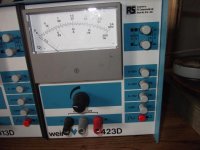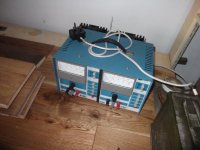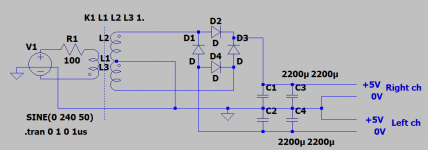Fantastic, something to look forward to, do you know any place that are good for a noob to start on learning? 🙂
Here is a good public domain introductory electronics book. There are also specialized power supply books.
https://www.pearl-hifi.com/06_Lit_A...pers/Horowitz-Hill/The_Art_of_Electronics.pdf
Last edited:
WOW thanks a lot, it looks like a great book to learn a lot from🙂Here is a good public domain introductory electronics book. There are also specialized power supply books.
https://www.pearl-hifi.com/06_Lit_A...pers/Horowitz-Hill/The_Art_of_Electronics.pdf
WOW thanks a lot, it looks like a great book to learn a lot from🙂
It is, there's an expensive, expanded third edition, but this one is better suited for you.
Okay thanks, maybe I could ask if you have a link to that one also, to read after I have read this version?It is, there's an expensive, expanded third edition, but this one is better suited for you.
Okay thanks, maybe I could ask if you have a link to that one also, to read after I have read this version?
The third edition has more info for practicing engineers.
Maybe this student version would be best, and it's cheaper too. There's a good preview.
Learning the Art of Electronics: A Hands-on Approach | by Thomas C. Hayes
Last edited:
You are a wealth of great information, thanks so much!!The third edition has more info for practicing engineers.
Maybe this student version would be best, and it's cheaper too.
Learning the Art of Electronics: A Hands-on Approach | by Thomas C. Hayes
That's a lot of power, how much power does it have? Looks nice by the way! 🙂I own a commercial center tapped variable power supply.
It is modular with 0 to 30V and 0 to 60 volts both being isolated.
Linked in series they will run a valve radio nicely on 90 volts.
The two sections are 30V at one amp and 50V at 500ma.
I can connect them in series for running battery valve radios.
They have tapped transformers and complicated switching allowing lower voltages to be selected at higher current.
The outputs are center tapped with inside an extra heat sink with power transistors that maintain the center tap.
The main use would be for R&D using opamps requiring center tapped power supplies.
It has been one of my two main bench power supplies for many years.
I can connect them in series for running battery valve radios.
They have tapped transformers and complicated switching allowing lower voltages to be selected at higher current.
The outputs are center tapped with inside an extra heat sink with power transistors that maintain the center tap.
The main use would be for R&D using opamps requiring center tapped power supplies.
It has been one of my two main bench power supplies for many years.
'It is something like that, that could be funny to build one day! 🙂The two sections are 30V at one amp and 50V at 500ma.
I can connect them in series for running battery valve radios.
They have tapped transformers and complicated switching allowing lower voltages to be selected at higher current.
The outputs are center tapped with inside an extra heat sink with power transistors that maintain the center tap.
The main use would be for R&D using opamps requiring center tapped power supplies.
It has been one of my two main bench power supplies for many years.
Lab supplies with dual outputs use a transformer with two isolated secondaries, each with a supply circuit.
The two V supplies can be connected in series for either 2V or else for +/-V. With some circuits the
two V supplies can also be paralleled for twice the current.
You can't use a transformer with a single center tapped secondary, unless you want the two supplies
to always be in series.
The two V supplies can be connected in series for either 2V or else for +/-V. With some circuits the
two V supplies can also be paralleled for twice the current.
You can't use a transformer with a single center tapped secondary, unless you want the two supplies
to always be in series.
Last edited:
Hmm yes that make sense but my idea is to be able to connect Right and Left channel so that I end up with -5V to +5V to i.e. an op-amp. Or have two +5V channels. I have let me tell that to do both, I have to use only one transformer.Lab supplies with dual outputs use a transformer with two isolated secondaries, each with a supply circuit.
The two V supplies can be connected in series for either 2V or else for +/-V. With some circuits the
two V supplies can also be paralleled for twice the current.
Hmm yes that make sense but my idea is to be able to connect Right and Left channel so that I end up with -5V to +5V to i.e. an op-amp. Or have two +5V channels. I have let me tell that to do both, I have to use only one transformer.
Most available medium and small transformers do have two separate secondaries.
oh so two "center tabs" instead of one?Most available medium and small transformers do have two separate secondaries.
And then connect connect the two center tabs when I want to use +-5V?
oh so two "center tabs" instead of one?
And then connect connect the two center tabs when I want to use +-5V?
It would be two floating supplies that you can connect in series, or not.
Here's an example.
Attachments
Thanks, so like on the drawing, except the bottom trace, going to ground?It would be two floating supplies that you can connect in series, or not.
Here's an example.
Just pure curiosity but what would happen if it was made of two separate transformers?
Thanks, so like on the drawing, except the bottom trace, going to ground?
Just pure curiosity but what would happen if it was made of two separate transformers?
That's not normally done due to larger size, higher cost, possibly unequal voltages, have to separately fuse each transformer primary.
Okay, yes greater costs, but you is there any advantages of using two instead of one, beside can build two separate cabinets?That's not normally done due to larger size, higher cost, possibly unequal voltages, have to separately fuse each transformer primary.
Okay, yes greater costs, but you is there any advantages of using two instead of one,
beside can build two separate cabinets?
Most lab supplies are built with two floating supplies in one cabinet, more flexible and no disadvantages.
The better ones allow paralleling the two supplies also. Sometimes you need a floating supply that is
not referenced to ground.
Last edited:
- Home
- Design & Build
- Construction Tips
- Center tab on / off or, from +-5V to 0-10V



